10 Essential Price Intelligence Strategies for Market Analysts

10 Essential Price Intelligence Strategies for Market Analysts
Overview
The article presents essential price intelligence strategies tailored for market analysts, underscoring the significance of comprehensive datasets and tools in enhancing pricing strategies. By leveraging price intelligence through data-driven insights, dynamic pricing, and consumer behavior analysis, analysts can significantly improve their decision-making processes, competitive positioning, and overall business performance.
What makes these datasets so crucial? The features of robust data collection methods not only provide a wealth of information but also enable analysts to uncover trends and patterns that may otherwise go unnoticed. The advantages of utilizing these insights are manifold; they empower businesses to adapt swiftly to market changes and consumer preferences, ultimately leading to better strategic outcomes.
The benefits are clear: enhanced pricing strategies lead to improved profitability and market share. As analysts consider how to integrate these strategies into their work, they should reflect on the implications of utilizing comprehensive data. How can these insights reshape their approach to pricing? By engaging with these questions, analysts can better appreciate the transformative potential of price intelligence in their decision-making arsenal.
Introduction
In a world where pricing strategies can make or break a business, the importance of price intelligence has never been more pronounced. Market analysts are increasingly turning to innovative tools and comprehensive datasets to navigate the complexities of consumer behavior, competitor pricing, and market trends. This article explores ten essential strategies that empower analysts to leverage price intelligence effectively, unlocking the potential for enhanced decision-making and competitive advantage. As the landscape evolves, organizations must consider:
- How can they ensure they remain agile and responsive to the ever-changing economic dynamics?
Initial Data Offering: Access Comprehensive Price Intelligence Datasets
Initial Data Offering (IDO) serves as a vital resource for analysts seeking comprehensive datasets for price intelligence. The platform showcases a varied selection of datasets, including alternative data, fundamentals data, and ESG data, which are essential for understanding economic dynamics and competitor value approaches. By utilizing these datasets, analysts can enhance their pricing strategies, enabling data-driven decisions that align with current trends and consumer behavior.
As a hub for high-quality datasets, IDO continuously lists new datasets daily, providing subscribers with exclusive access to unique data collections that enhance their analytical capabilities. Industry leaders underscore the importance of these datasets by stressing the necessity of accessing comprehensive price intelligence for effective sector analysis. For instance, companies such as Dorel have effectively adopted centralized consumer insights to improve product development and marketing approaches, showcasing the influence of data on operational efficiency and brand reputation.
Furthermore, the increasing trend of incorporating ESG factors into cost strategies reflects a movement towards sustainability in industry analysis. Analysts are increasingly utilizing ESG data to align pricing with consumer values, thereby enhancing brand loyalty and competitive positioning. How are you integrating ESG considerations into your pricing strategies?
As the terrain of cost intelligence evolves, the latest trends suggest a growing dependence on alternative data sources, which offer unique insights into consumer behavior and fluctuations in commerce. By harnessing the power of IDO's curated datasets, analysts can stay ahead of the curve, making informed decisions that foster growth and innovation. Are you ready to leverage these insights for your strategic advantage?
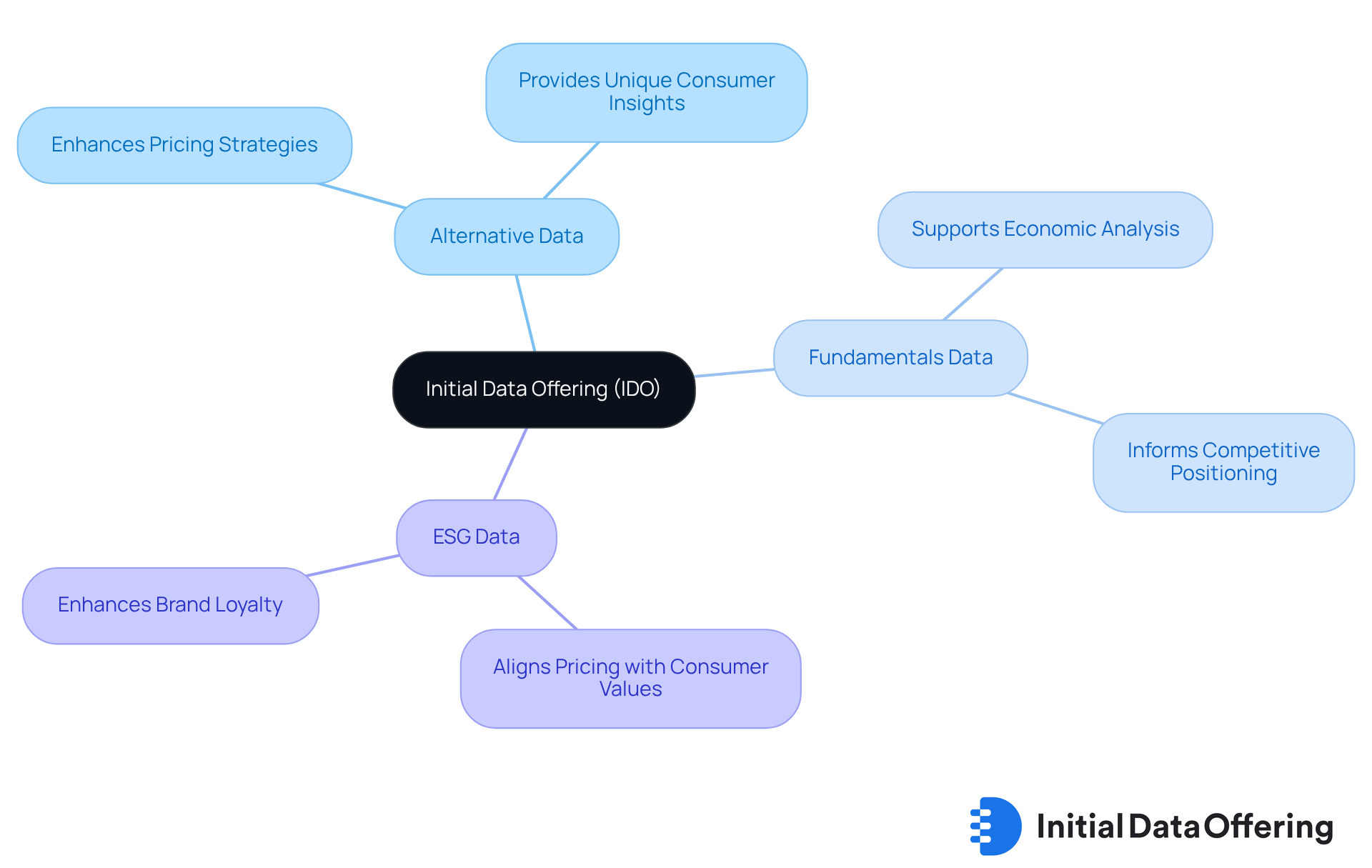
Pricefy: Enhance Sales with Advanced Price Intelligence Tools
Pricefy offers sophisticated price intelligence tools designed to empower companies in tracking competitor rates in real-time. These tools enable analysts to automate cost adjustments based on industry fluctuations, ensuring that their rates remain competitive. The primary advantage of utilizing Pricefy lies in its ability to enhance sales while providing valuable insights into consumer behavior. Consequently, businesses can tailor their offerings effectively to meet market demands.
How can your organization leverage Pricefy's capabilities to improve its pricing strategy? By adopting these tools for price intelligence, companies not only gain a competitive edge but also develop a deeper understanding of their customers. This dual benefit positions businesses to respond proactively to market changes, ultimately driving growth and profitability. The integration of such insights can lead to more informed decision-making and strategic planning.
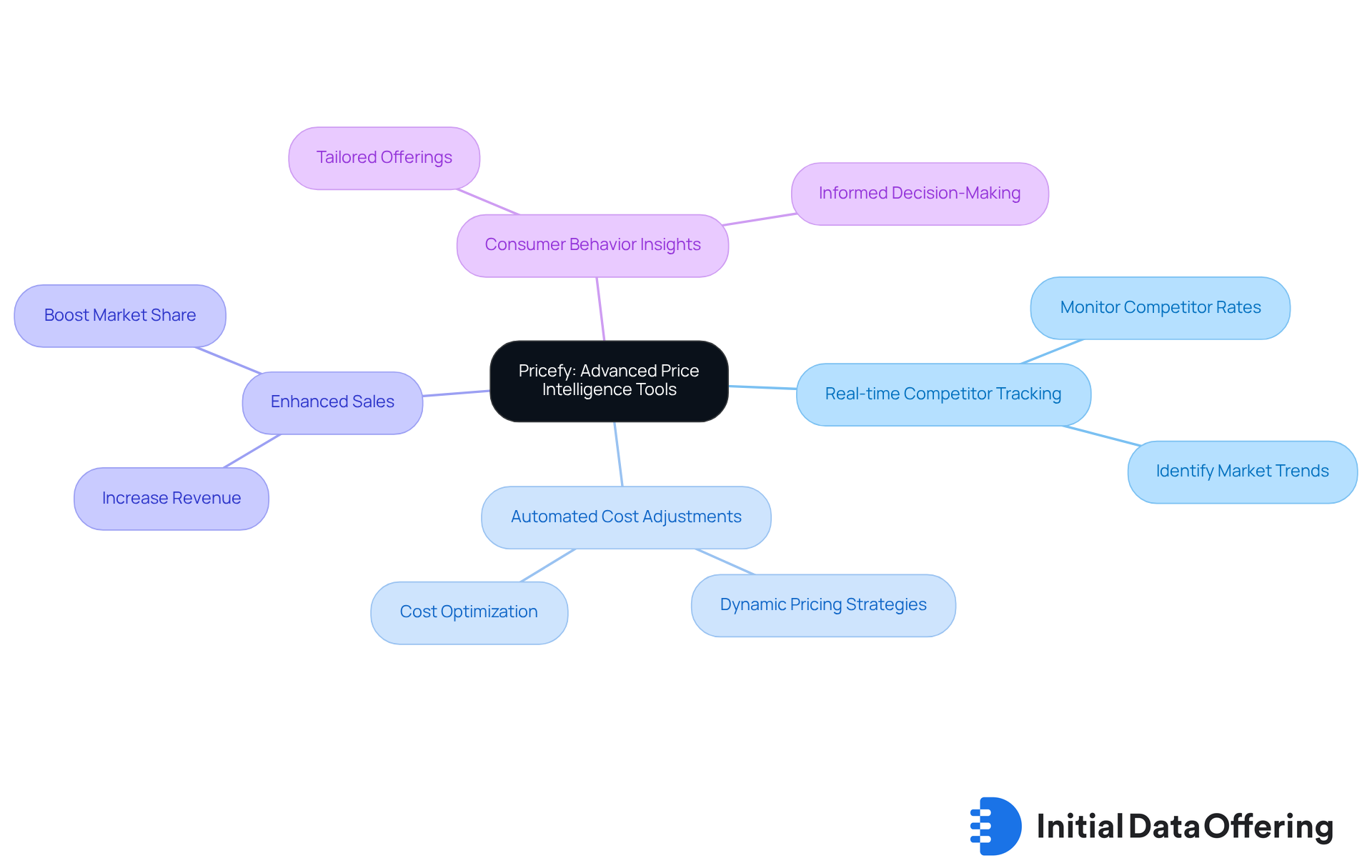
Priceva: Optimize Competitive Pricing Strategies for E-commerce Success
Priceva stands out as a powerful tool designed to empower e-commerce businesses in optimizing their competitive pricing strategies through price intelligence. By meticulously analyzing competitor prices and industry trends, Priceva offers price intelligence that equips analysts with the insights needed to establish optimal price points. This capability not only attracts customers but also enhances profit margins, which is crucial for e-commerce platforms in a landscape where rapid adaptation to market fluctuations is essential for success.
Companies utilizing price intelligence have reported significant enhancements in their strategies for setting prices. Many have attained higher conversion rates and greater customer loyalty as a result. According to the Competitor Price Monitoring Market, valued at USD 1.2 Billion in 2024 and expected to expand at a CAGR of 10.5% from 2026 to 2033, the need for effective cost management tools is increasing.
As an e-commerce expert states, "Dynamic adjustments keep you adaptable to constantly evolving market conditions, ensuring you consistently charge the correct amount at the appropriate moment." As e-commerce continues to evolve, tools like Priceva are indispensable for maintaining a competitive edge and driving sustainable growth. However, analysts should also be aware of potential challenges, such as customer backlash from dynamic cost strategies, which can damage brand value if not managed properly.
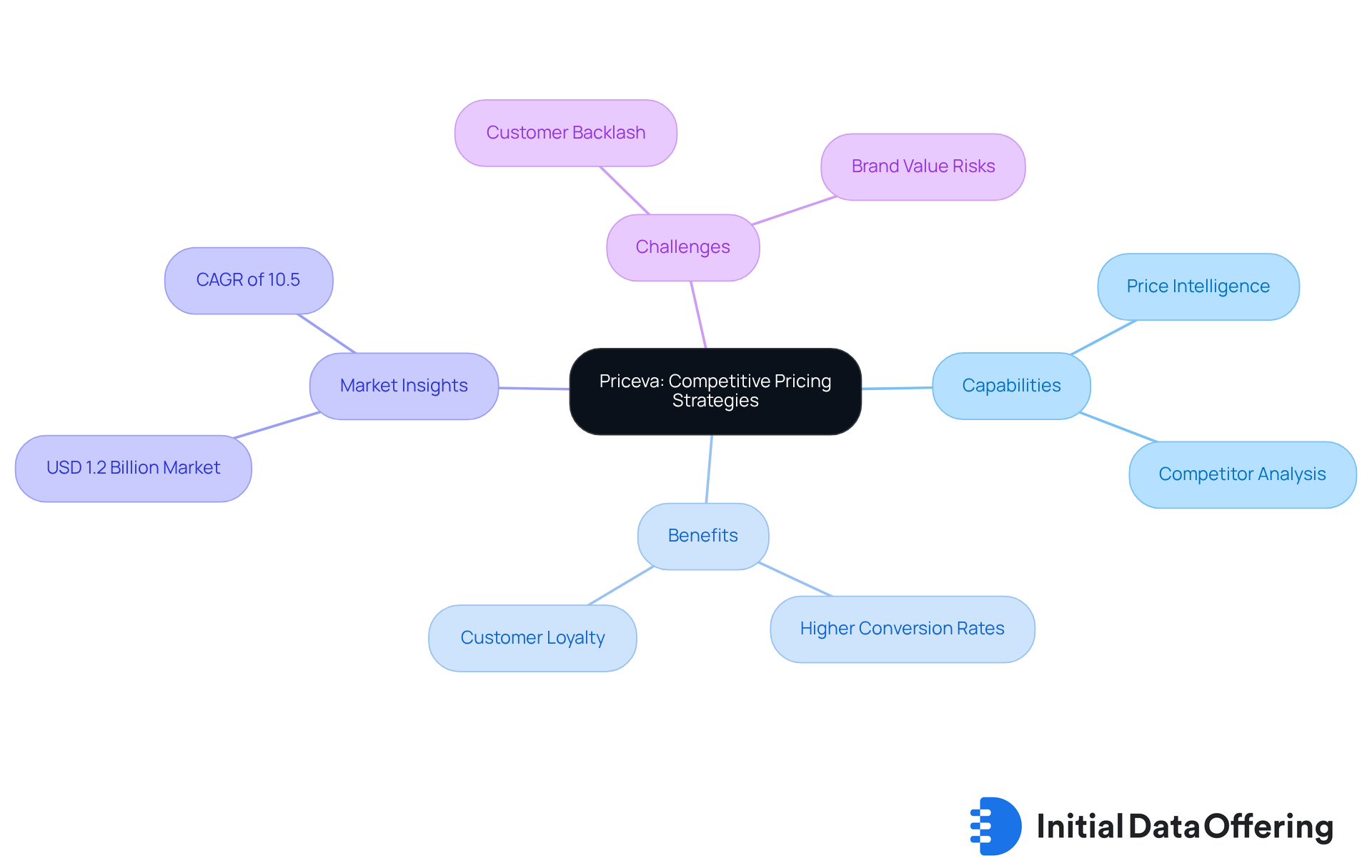
Psychological Pricing: Leverage Consumer Behavior Insights for Pricing Strategies
Psychological strategies serve as a tactical method that utilizes price intelligence to align costs with consumer perceptions and emotions, significantly influencing purchasing choices. One effective tactic within this framework is charm pricing, where costs are set just below a round number, such as $9.99 instead of $10. This seemingly minor adjustment creates a perception of greater value, leading to increased sales. Research indicates that items priced at $9.99 can surpass those priced at $10 by up to 24%, illustrating the profound influence of consumer psychology in sales strategies.
In 2025, insights into consumer behavior reveal that 62% of shoppers are more inclined to respond favorably to charm offers, particularly amid rising inflation and economic pressures. Businesses that have successfully adopted charm strategies include major retailers and e-commerce platforms, which report significant boosts in conversion rates and customer retention. For example, a prominent online retailer observed a 15% rise in sales after adjusting their strategy to incorporate charm pricing.
Behavioral economists emphasize the effectiveness of charm strategies, noting that they tap into the cognitive biases of consumers. As one expert states, "Charm tactics not only influence the perceived value of a product but also enhance the overall shopping experience, making consumers feel they are making smarter financial choices." This insight underscores the importance of understanding consumer behavior when developing price intelligence strategies.
As market analysts refine their pricing approaches, employing price intelligence through charm pricing can be a powerful tool to resonate with consumers, drive sales, and foster loyalty in an increasingly competitive landscape. How can your business implement charm pricing to enhance customer engagement and boost sales?

Implementation Challenges: Navigate Obstacles in Price Intelligence Adoption
Implementing cost intelligence strategies presents several challenges, notably data integration hurdles, organizational resistance, and the necessity for continuous training. A major obstacle is the unwillingness of certain stakeholders to accept change, often arising from a lack of comprehension of the advantages that cost intelligence can provide. To overcome this resistance, organizations should foster a culture that prioritizes data-driven decision-making, ensuring that all team members acknowledge the strategic value of cost intelligence. This can be achieved through targeted training sessions that not only educate employees about the tools and methodologies but also demonstrate their practical applications in driving business growth.
For organizations striving to overcome these obstacles, initiating pilot programs can be particularly effective. These programs demonstrate the efficiency of cost intelligence in practical situations, showcasing its real-world applications. By sharing success stories and tangible outcomes, organizations can build trust and enthusiasm among stakeholders. Moreover, industry leaders stress the significance of aligning cost intelligence initiatives with wider business goals to improve support from all tiers of the organization. As the landscape evolves in 2025, proactively tackling these challenges will be essential for organizations seeking to utilize cost intelligence for competitive advantage.
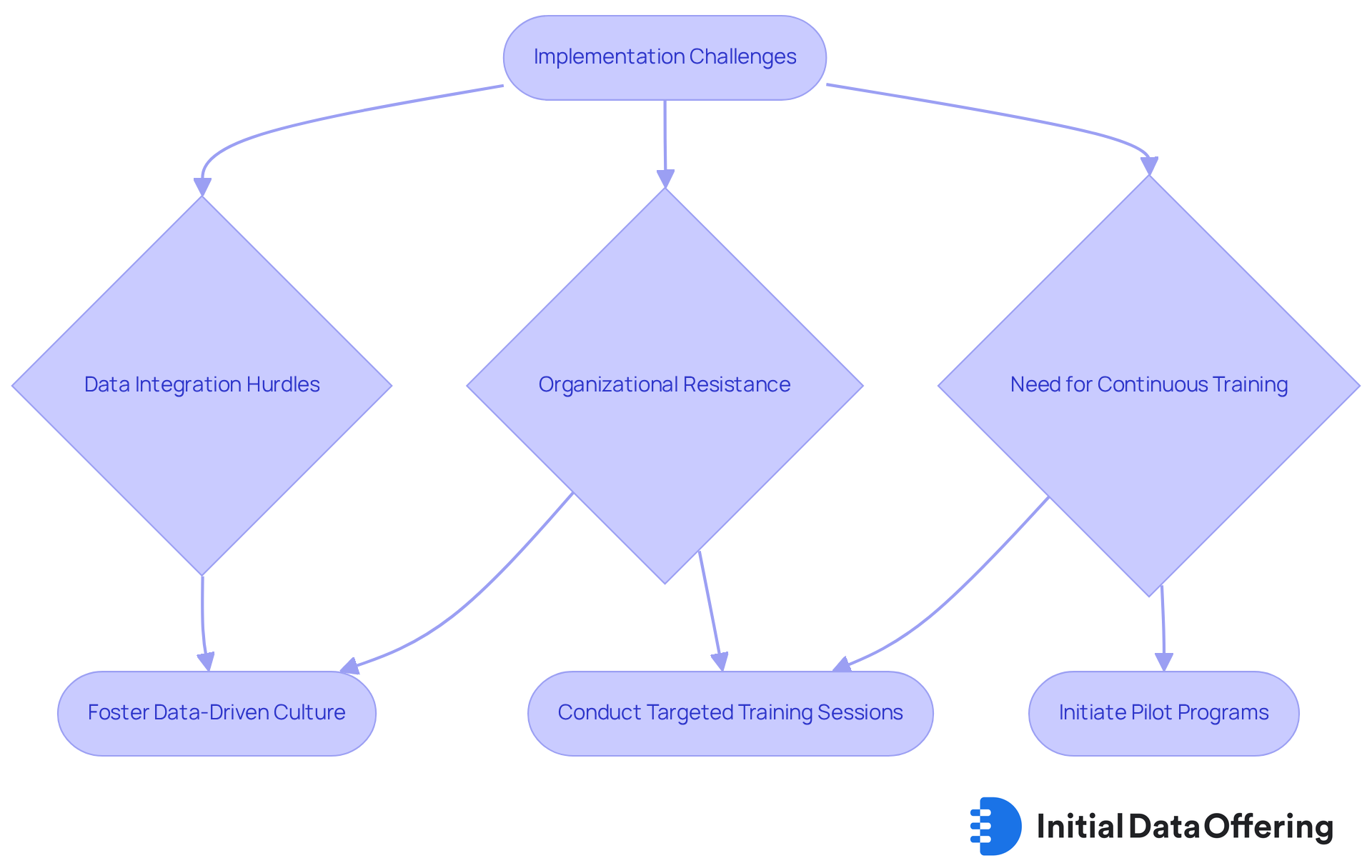
Data Accuracy: Ensure Reliable Insights for Informed Decision-Making
Data accuracy plays a crucial role in effective price intelligence, as inaccuracies can lead to misguided valuation strategies and significant revenue losses. Organizations must implement rigorous data validation processes and leverage advanced tools, such as Gurobi, to ensure the integrity of the data collected. For example, companies like Cosentino have successfully enhanced decision-making and eliminated production bottlenecks by utilizing reliable data analytics. This illustrates the tangible benefits of prioritizing data accuracy.
Analysts should also recognize that even minor discrepancies can distort cost decisions, ultimately affecting profitability. As Ken McDonald, a drone pilot and GIS analyst, emphasizes, having reliable data is essential for effective decision-making. By concentrating on price intelligence, organizations can not only enhance their financial results but also foster a culture of informed decision-making that drives sustainable growth.
To ensure data accuracy, analysts should consider implementing a structured validation process that includes:
- Regular audits
- The use of automated data quality tools
How can your organization benefit from these practices? By adopting these strategies, companies can position themselves for success in a competitive landscape.
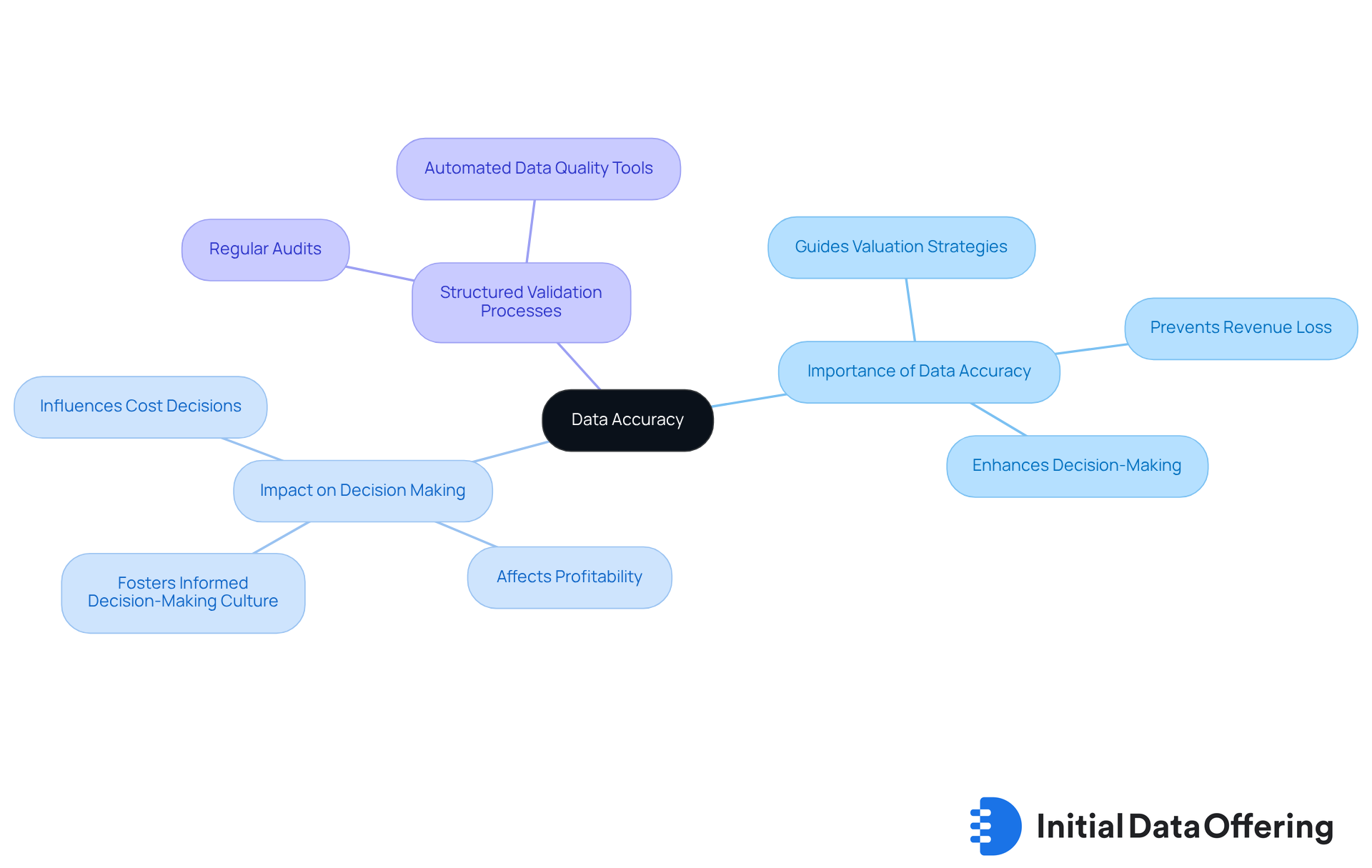
Dynamic Pricing: Monitor and Adjust Strategies for Market Competitiveness
Dynamic cost adjustments represent a strategic method that enables businesses to use price intelligence to modify their rates in real-time, responding to market demand, competitor costs, and other external factors. This approach is increasingly vital in sectors where price intelligence is crucial due to common price volatility, such as e-commerce and travel. By leveraging advanced analytics and historical data, companies can enhance their revenue strategies through price intelligence to capture maximum income during peak demand periods while remaining competitive during slower times.
As we look ahead to 2025, the trend of price intelligence through real-time pricing adjustments continues to gain momentum. Businesses are utilizing sophisticated dynamic pricing software that leverages price intelligence to automate rate changes based on occupancy levels, market trends, and consumer behavior. For instance, hotels can utilize these tools to increase rates during high-demand events, ensuring they capitalize on heightened interest while also reducing costs during off-peak periods to enhance occupancy. However, potential downsides, such as guest dissatisfaction due to unexpected price intelligence changes, must be considered to maintain customer loyalty.
Successful applications of dynamic cost strategies can be observed across various sectors. A notable example is Algida, a Turkish ice cream brand that tailored its marketing campaigns based on local weather conditions, achieving a remarkable 121% increase in conversion rates through dynamic creative optimization. This case underscores how businesses can effectively respond to real-time data to enhance sales and customer engagement. Algida's approach involved segmenting users by city, allowing for targeted marketing that resonated with local conditions.
Experts in price intelligence emphasize the importance of ongoing observation and modification. Regular performance evaluations of dynamic cost initiatives are essential for understanding demand trends and enhancing price intelligence strategies. As Jordan Hollander, co-founder of HotelTechReport, stated, 'Dynamic cost strategies leverage price intelligence to not only optimize revenue but also enable businesses to adjust quickly to evolving economic circumstances, ensuring they stay competitive.' Furthermore, integrating dynamic cost systems with property management systems (PMS) and channel managers is crucial for seamless updates and avoiding double bookings.
By implementing flexible cost strategies and leveraging price intelligence, companies can effectively navigate the complexities of consumer demand, maximize their revenue potential, and enhance their overall competitiveness in a constantly changing environment.
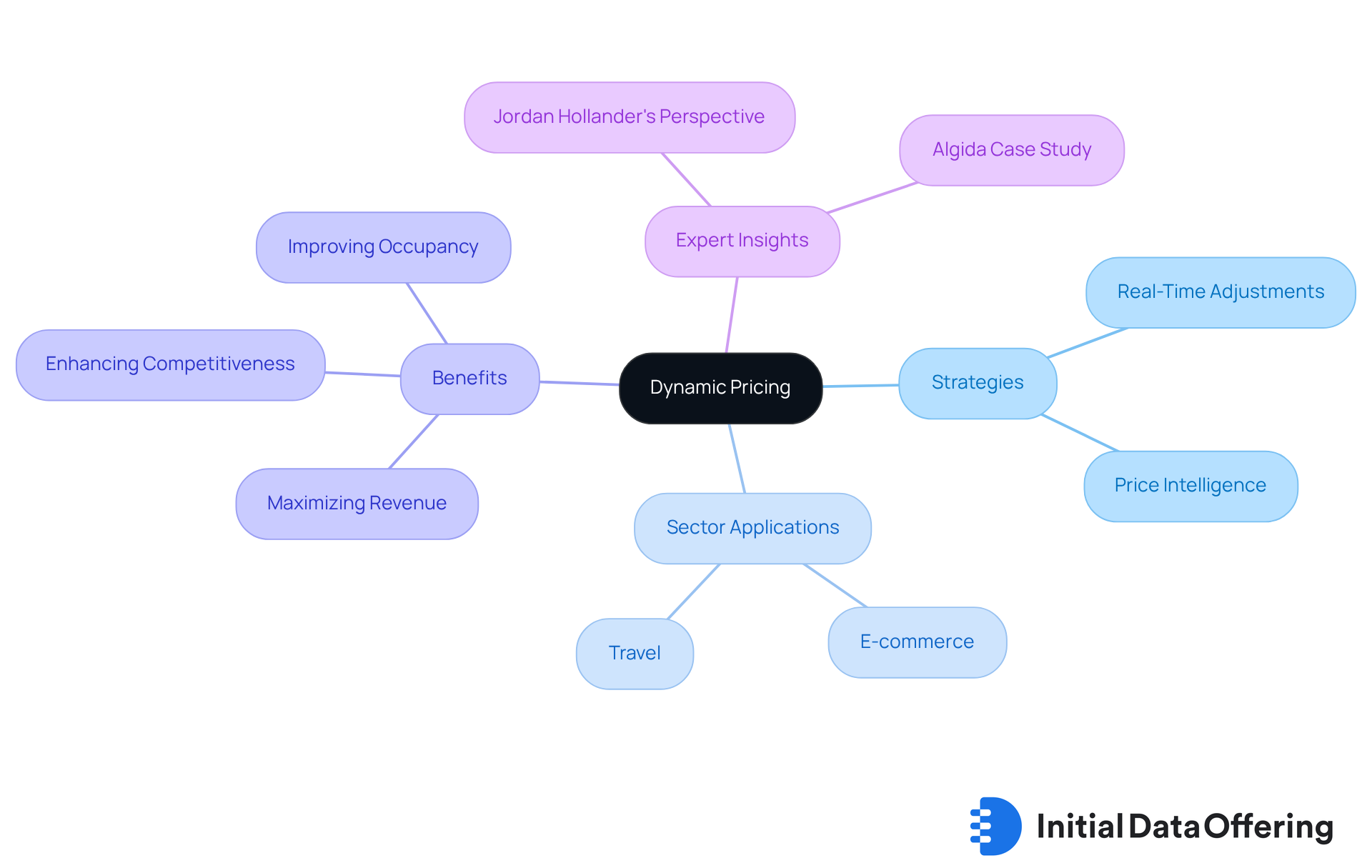
Supplier Negotiations: Utilize Price Intelligence for Better Business Outcomes
Price intelligence acts as a crucial tool in improving supplier negotiations by offering valuable insights into market cost trends and competitor purchasing conditions. This feature allows analysts to leverage data-driven insights, resulting in improved agreements with suppliers. The advantage here is clear: organizations can secure more favorable costs and conditions, ultimately leading to reduced expenses in procurement processes.
Moreover, price intelligence helps in making real-time cost decisions and informs strategic planning. This benefit empowers organizations to adjust their negotiation strategies in response to fluctuating economic conditions. Ongoing observation of competitors' pricing tactics and industry trends is essential for maintaining competitive pricing during negotiations. As procurement expert Stefan Gergely emphasizes, grasping market dynamics is vital for informed decision-making that fosters better business outcomes.
Incorporating price intelligence into purchasing strategies not only enhances negotiation efficiency but also facilitates substantial savings and improved supplier relationships. Organizations can further respond adeptly to competitor rate changes by establishing cost regulations and automating adjustments.
How can your organization leverage price intelligence to enhance negotiations and strengthen partnerships with suppliers?
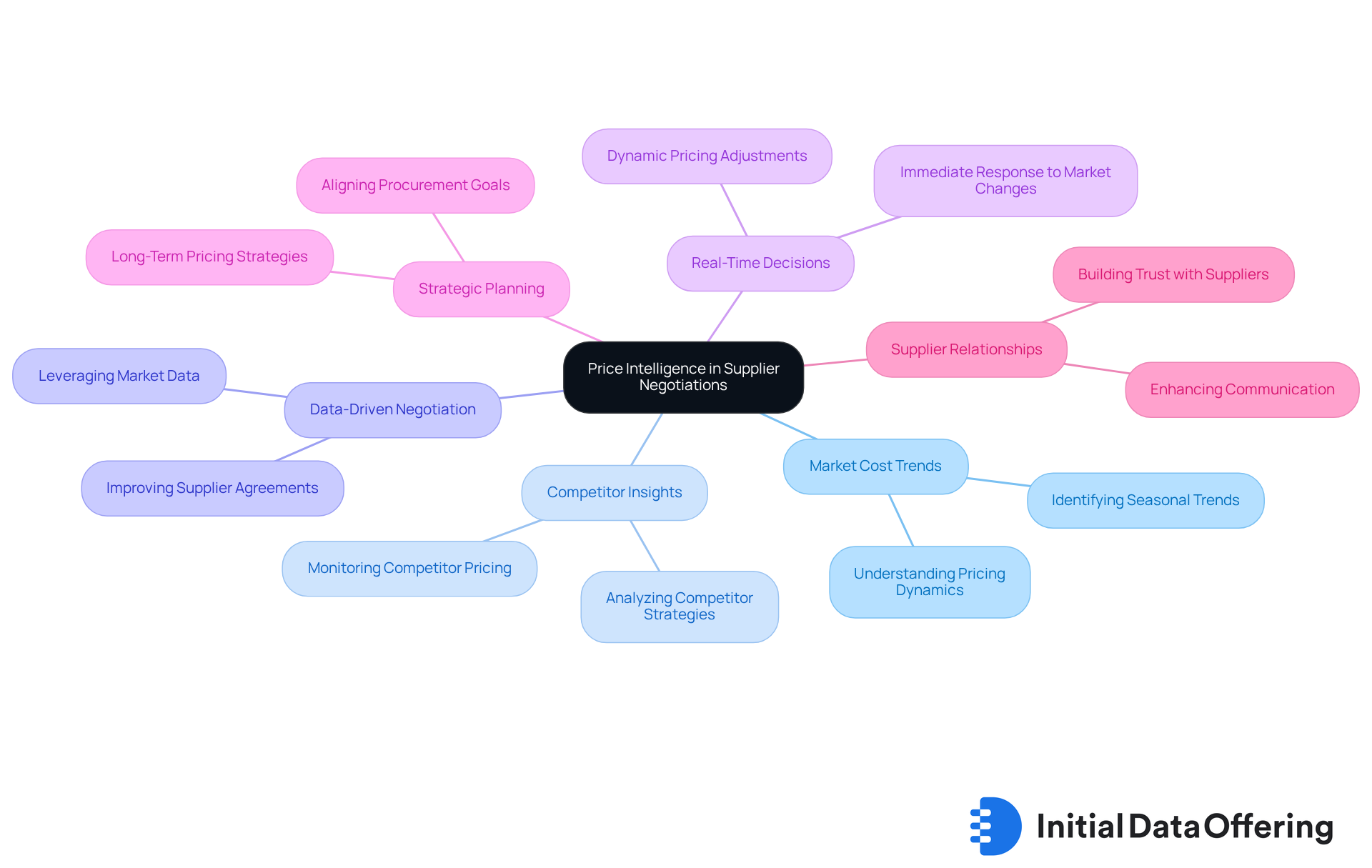
Marketing Strategies: Refine Approaches with Price Intelligence Insights
Incorporating price intelligence into marketing strategies enables companies to tailor their messaging and promotions based on competitive cost insights. This approach is crucial as it examines how costs influence consumer behavior and preferences. By leveraging these insights, analysts can enhance their marketing strategies, resulting in campaigns that resonate more effectively with target audiences.
For instance, Domino's recent campaign utilized data-driven insights, leading to a remarkable 30% increase in sales and a 16% rise in ad-induced revenue. Notably, approximately 40 percent of the campaign budget was allocated to mobile and digital platforms, reflecting a strategic shift in response to evolving consumer behavior. This case illustrates how understanding cost dynamics can significantly improve marketing efficiency, especially in a competitive environment where Domino's faced challenges in the QSR sector following COVID-19.
As consumer behavior continues to evolve in 2025, utilizing price intelligence alongside competitive cost insights will be essential for developing effective marketing strategies that boost sales and foster brand loyalty. Analysts emphasize that a strategic focus on costs not only guides promotional strategies but also influences overall consumer interaction. This makes it an integral component of effective marketing campaigns.
How can your organization leverage these insights to enhance its marketing efforts?
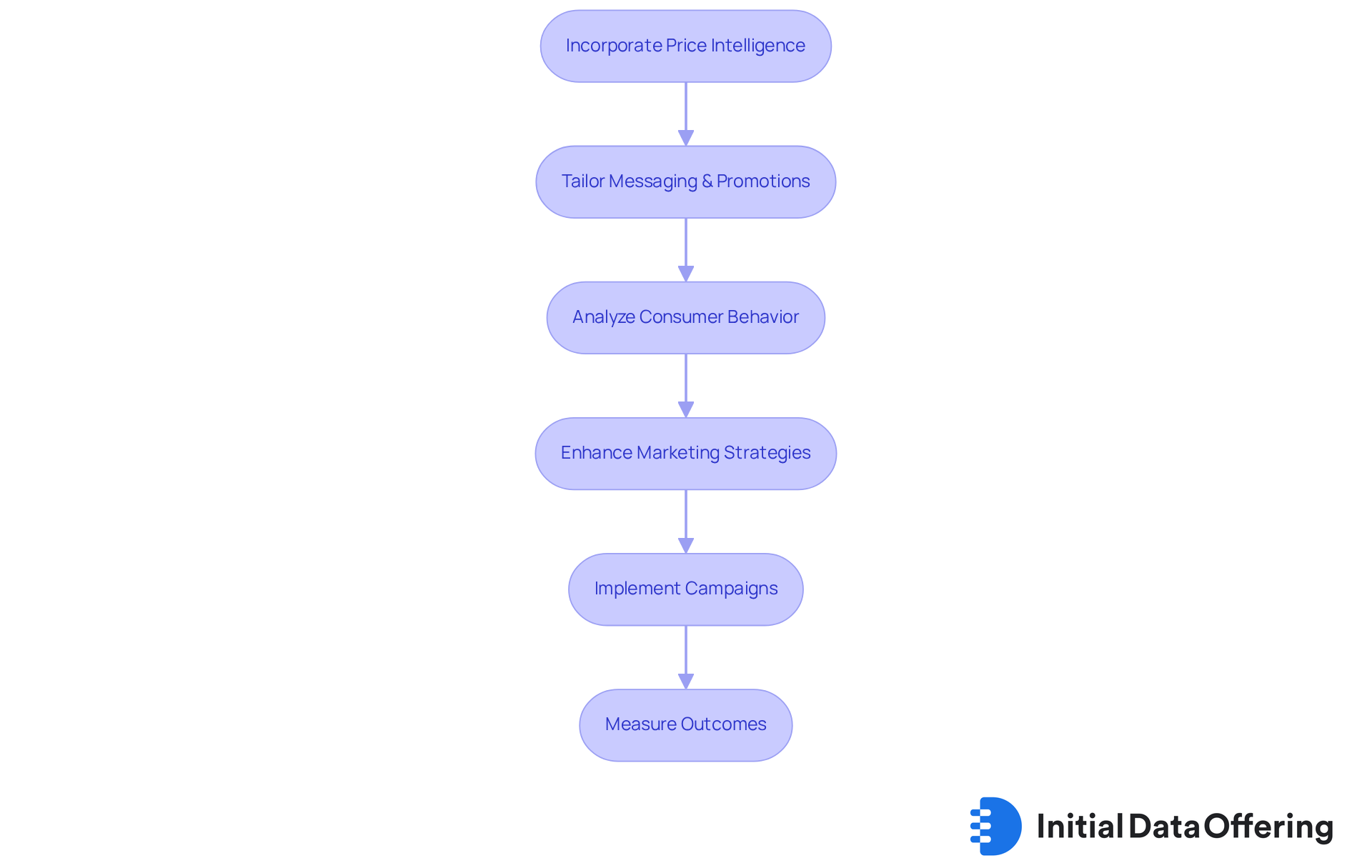
Long-Term Positioning: Achieve Sustainable Competitive Advantage with Price Intelligence
Leveraging price intelligence efficiently offers a significant competitive advantage by enabling companies to make informed pricing decisions aligned with industry dynamics. What are the long-term benefits of incorporating price intelligence into business models? Analysts should focus on strategies that incorporate price intelligence to ensure their approaches remain relevant in a constantly evolving market.
By continuously adapting to shifts in market conditions and consumer preferences, organizations can sustain their competitive edge. This adaptability not only drives long-term success but also fosters resilience in the face of challenges.
In conclusion, the effective use of cost intelligence is not just a tactical choice; it is a strategic imperative for organizations aiming for sustained growth.
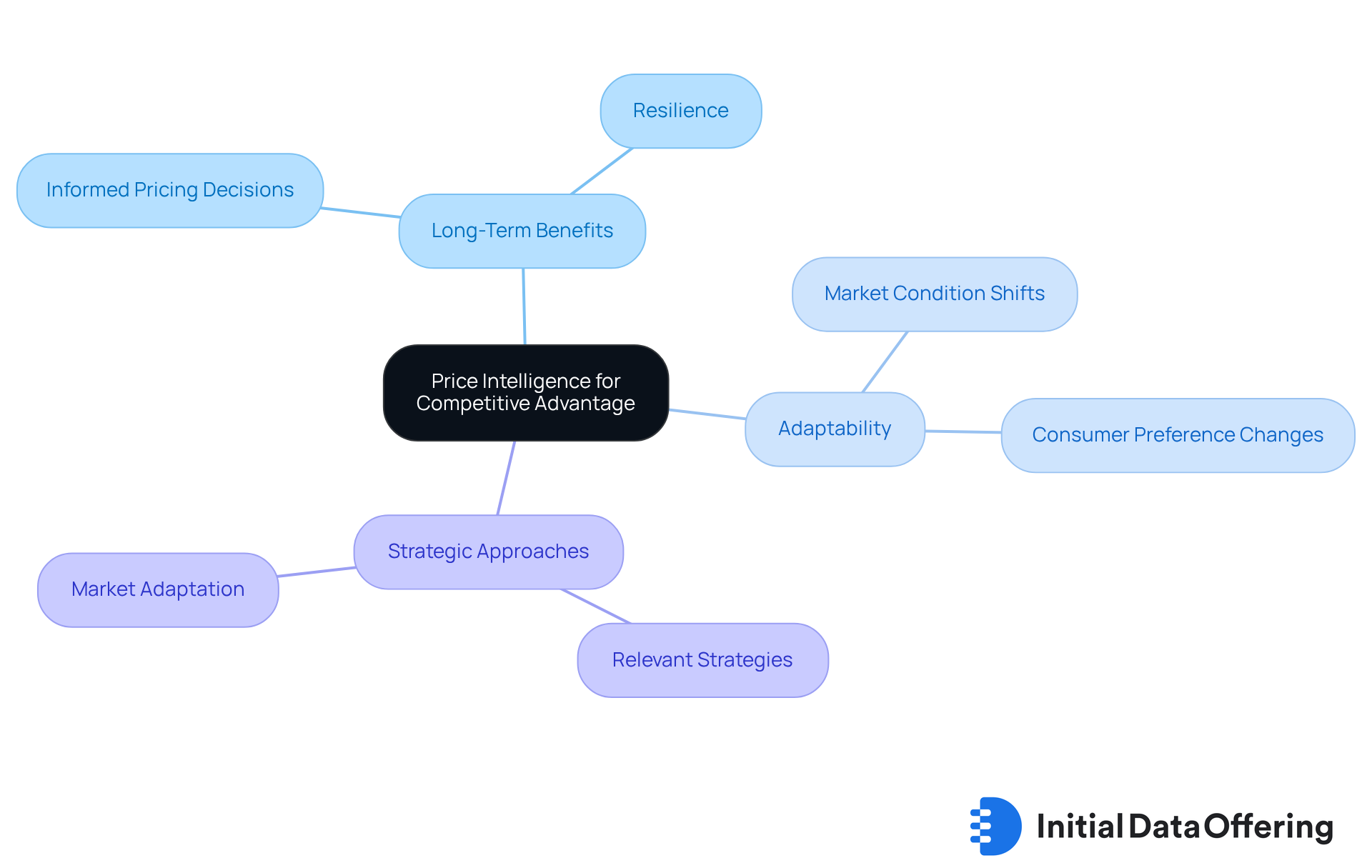
Conclusion
The integration of price intelligence into market analysis is no longer optional; it has become a fundamental requirement for organizations aiming to thrive in a competitive landscape. By leveraging comprehensive datasets, advanced tools, and psychological insights, analysts can craft pricing strategies that not only respond to market dynamics but also resonate with consumer behavior. This strategic approach empowers businesses to make informed decisions that align with both current trends and long-term objectives.
Throughout this article, key strategies have been highlighted, including:
- The utilization of Initial Data Offering for diverse datasets
- The automation of pricing adjustments through tools like Pricefy
- The optimization of competitive pricing with Priceva
The importance of psychological pricing, the challenges in implementation, and the necessity of data accuracy have also been underscored as critical components in developing effective price intelligence strategies. Each of these elements plays a vital role in enhancing operational efficiency, driving sales, and fostering brand loyalty.
Looking ahead, organizations must embrace price intelligence not just as a tactical tool but as a strategic asset that can lead to sustainable competitive advantages. By continuously adapting to market changes and consumer preferences, businesses can navigate challenges and position themselves for long-term growth. The question remains: how will your organization leverage these insights to elevate its pricing strategies and ensure lasting success in the marketplace?
Frequently Asked Questions
What is the Initial Data Offering (IDO) and its purpose?
The Initial Data Offering (IDO) is a resource for analysts that provides comprehensive datasets for price intelligence, including alternative data, fundamentals data, and ESG data. It helps analysts enhance their pricing strategies and make data-driven decisions aligned with current trends and consumer behavior.
How does IDO support analysts in their work?
IDO continuously lists new datasets daily, offering subscribers exclusive access to unique data collections that improve their analytical capabilities. This access is crucial for effective sector analysis and understanding economic dynamics.
What role do ESG factors play in pricing strategies according to the article?
ESG factors are increasingly incorporated into cost strategies as part of a movement towards sustainability. Analysts use ESG data to align pricing with consumer values, which can enhance brand loyalty and competitive positioning.
What is Pricefy and how does it benefit companies?
Pricefy is a tool that provides sophisticated price intelligence, allowing companies to track competitor rates in real-time and automate cost adjustments based on industry fluctuations. This helps businesses enhance sales and gain valuable insights into consumer behavior.
How can organizations leverage Pricefy for their pricing strategies?
Organizations can use Pricefy's capabilities to improve their pricing strategies by gaining a competitive edge and a deeper understanding of customer needs, enabling proactive responses to market changes and driving growth.
What is Priceva and its significance for e-commerce businesses?
Priceva is a powerful tool designed to help e-commerce businesses optimize their competitive pricing strategies through price intelligence. It analyzes competitor prices and industry trends, helping businesses establish optimal price points to attract customers and enhance profit margins.
What are the reported benefits of using price intelligence tools like Priceva?
Companies utilizing price intelligence have reported significant improvements in their pricing strategies, resulting in higher conversion rates and greater customer loyalty.
What challenges might analysts face when implementing dynamic pricing strategies?
Analysts should be aware of potential challenges such as customer backlash from dynamic pricing strategies, which can harm brand value if not managed properly.